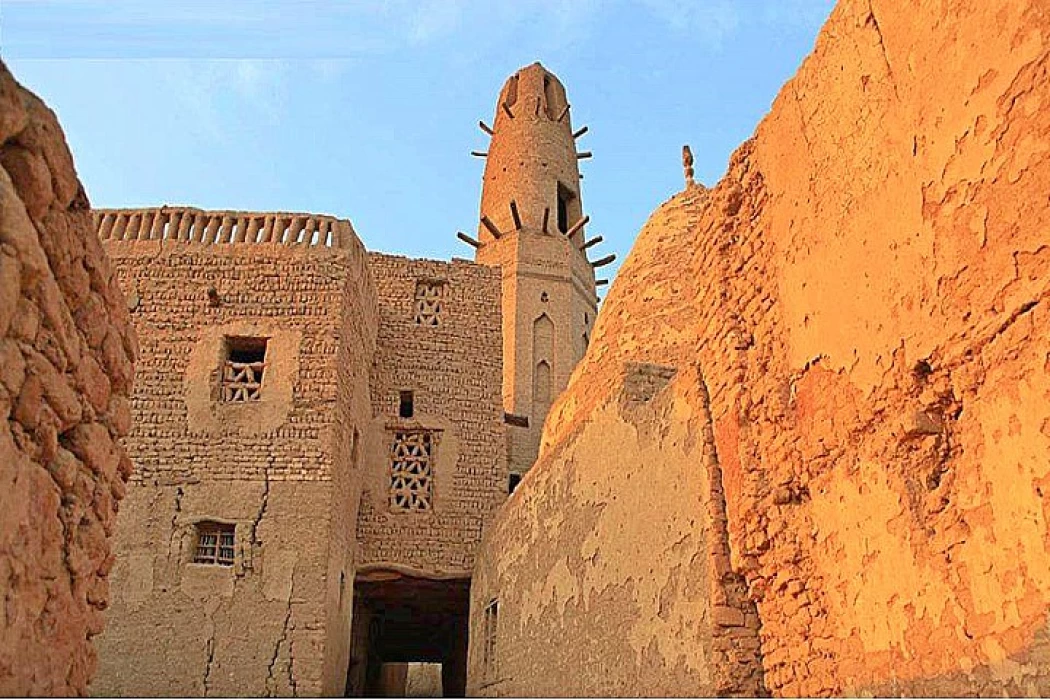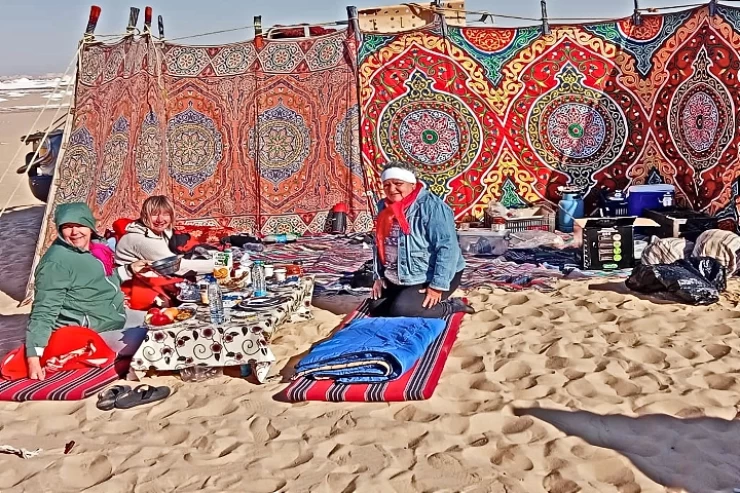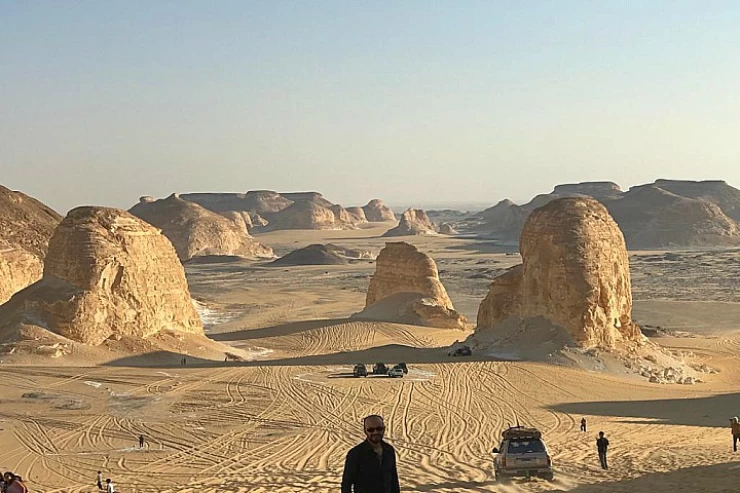
El Dakhla Oasis
Dakhla Oasis is regarded as one of the most captivating oases in Egypt. Within this oasis, there are over five hundred thermal springs, including notable ones such as Bir Tarfawi and Bir Al-Gebel, alongside picturesque adobe houses and remnants from the medieval periods of the towns of Al-Qasr and Balat.
The oasis is centered around the principal town of Mut, which has origins dating back to ancient times and is named after the goddess Mut, the consort of the god Amun-Re. Although Mut has transformed into a modern tourist destination, visitors can still observe traces of the ancient city.
Exploring the narrow streets of the old town with a guide, engaging with local merchants, or cycling to discover the area at your leisure are all enjoyable options. In Dakhla, one can also indulge in luxury at the Al Tarfa Luxury Lodge and Spa, a desert retreat focused on wellness and relaxation.
Tourists flock to Dakhla Oasis for a rejuvenating getaway at the Al Tarfa Lodge spa or to experience treatments in the western desert. Summer temperatures can soar between 35 to 45 degrees Celsius.
Dakhla Oasis is not typically regarded as a singular entity; rather, it comprises a collection of small towns and villages dispersed along the route. Nevertheless, it boasts some of the most stunning landscapes and remarkable vistas among the oases of the western desert. Olive, orange, and date plantations are intermingled with sand dunes along the way. The oasis's localities are home to captivating sites such as the Tombs of Al-Muzawaka, which date back to the Roman period, and Al-Qasr, an enchanting medieval town constructed from clay bricks, with some buildings originating from the tenth century. This area presents a genuine labyrinth of narrow streets and hidden passages, situated at the base of rocky cliffs. It exemplifies a medieval Islamic town, dominated by the Nasr el-Din mosque's high tower, which is adorned with rough logs reminiscent of the minarets found in the region. In Al-Qasr, the tower is built in the Ayyubid style (1171-1250).
The ancient villages of Balat and Bashandi possess a distinct charm. The only accommodations available are located in Mutton, which also features several cafes and comfortable hotels.
A few kilometers before reaching Qasr lies the intriguing Roman ruins of Deir El Haggar. This site was once buried beneath the sand, which accounts for its remarkable state of preservation. The geological paintings dating back 2,000 years are truly astonishing. On the opposite side of this restored Roman temple are complex, rounded hills that house numerous tombs, some of which have been excavated while others have been looted. We can assure you through our company, Cairo Top Tours, that tourism in Egypt promises to be both fascinating and enjoyable.
The essence of El Dakhla Oasis is deep in the Western Desert of Egypt. This place has an oasis that is a picturesque paradise integrated into history, nature, and silence. It has verdant expanses in an arid scenery, making it a concealed treasure worth discovering. To an adventurous spirit, a historical sucker, or just someone looking for a quiet place to recharge, this oasis has it all.
El Dakhla Oasis presents an unusual combination of golden dunes, green fields, and natural hot springs. The beauty is complemented with palm groves and gardens flourishing in the heart of the desert. Dip into Bir Al-Gebel, a hot water spring famed for its healing potentials, or enjoy swimming in the fresh pools of Ain Al-Kasr. Places as quiet as these offer an ultimate rejuvenation experience.
Dakhla Oasis is taken into account as one of the most attractive oases in Egypt. within the oasis, there are quite five hundred thermal springs like those of Bir Tarfawi and Bir Al-Gebel, in addition to charming adobe homes and ruins of the medieval era of the cities of Al-Qasr and Balat.
Dakhla is organized around the main city, Mut, a town that dates back to swayer times and is named after goddess Mut, the consort of god Amun-Re. Though mutton has evolved to become a contemporary traveler dominion, these days you'll still see remains of the previous city.
Dakhla will hardly be thought of as one unit. It's rather a series of tiny cities and hamlets scattered on the road; however, it offers the foremost lovely landscapes and also the most exceptional views of all the oases of the western desert. Plantations of olives, oranges, and dates are interspersed with sand dunes on the road. The localities of the oasis shelter the majority of fascinating remains, just like the Tombs of Al-Muzawaka, which date from the swayer amount, or Al-Qasr, a charming medieval town, product of clay bricks, a number of those buildings initiate the tenth century. It's a true maze of slender streets and secret passages. engineered at the foot of rock cliffs, and it is the example of the medieval Islamic town dominated by the place of worship, Nasr el-Din, a high tower covered in rough logs akin to the minarets of mosques in a geographic region. In Al-Qasr, the tower is constructed within the Ayyubid vogue (1171-1250).
















